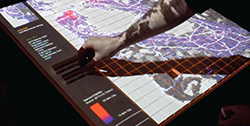NYC, Last Mile Delivery issues
Last Mile Delivery Issues
The “last-mile problem” can be addressed by streamlining the delivery process. However, there are a number of issues to consider when attempting to optimize a more cost-effective last-mile strategy. Problems with last-mile delivery include the following:
- Insufficient facilities: Last-mile distribution centers (DCs) may have anywhere between 8 and 12 facilities, whereas traditional delivery networks may only have three to five facilities. Having more facilities increases the proximity to consumers, improves delivery speed and saves money. An insufficient number of transportation facilities will increase travel time.
- Distance: The location of last-mile distribution centers is critical. Such facilities should be located where a company’s customers are found. If the customers are all over the country, it’s wise to consider the population centers on the Northeast and Eastern seaboards, which is where the highest concentration of home-delivery customers are located. A company that doesn’t choose its distribution centers wisely will still incur considerable expense and delay during the last mile.
- Time: It’s still reasonable to expect deliveries to take time, since distribution centers are located in industrial areas, not residential areas. The time it takes to make these deliveries is called stem time. However, if deliveries are taking more than 45 minutes, it means there’s a need for more distribution centers, or distribution centers closer to customers. If deliveries take too long, then there’s a loss of productivity. Shorter deliveries, however, offer opportunities to deliver more goods within the same time frame.
- Traffic: Traffic conditions may not be a factor in rural parts of the country, but a five-mile trip in a busy city can take time. In more congested areas, companies will need to consider more than just distance. If there aren’t additional distribution centers, there will need to be more efficient means of transportation to prevent delays.
- http://www.abcmessenger.com
Last Mile Delivery
“Density is the main driver of complexity when it comes to urban last-mile distribution,” said MIT's Matthias Winkenbach during a recent talk at U.S. DOT’s Volpe Center.
And new technologies mean customer expectations are changing, with more expectations of speed, flexibility, transparency, and reliability in last-mile deliveries, without having to pay more.
“What will be the impact of, say, autonomous trucks circling through a city without stopping, to move closer to where demand will occur within the next few minutes, to continually minimize difference between inventory and customer?” Winkenbach said. “This research is extremely data intensive, and it is difficult to efficiently route in highly congested and uncertain environments.”
High-resolution transactional data is key to understanding the true complexity and stochasticity of urban operations, Winkenbach said. Movement data is key, especially GPS data coupled with cell phone data, to triangulate where vehicles actually move. With high-resolution data, companies and planners can figure out where drivers park, and plan based on those patterns.
But there is no one-size fits all solution.
“No city is the same and within a city we don’t see two areas that are the same—you have to learn from previous delivery processes to become more efficient,” Winkenbach said. “We can build fancy models but if policy makers and companies don’t understand them, they have no impact.”
 That’s why Winkenbach and his colleagues use physical, visual interfaces to help policy makers find signals within the noise. In San Francisco, the team used a projected display of the city on an electronic board. Decision makers were given Lego bricks representing distribution centers, which they could plug into the board to see how the placement of those centers would affect traffic flow.
That’s why Winkenbach and his colleagues use physical, visual interfaces to help policy makers find signals within the noise. In San Francisco, the team used a projected display of the city on an electronic board. Decision makers were given Lego bricks representing distribution centers, which they could plug into the board to see how the placement of those centers would affect traffic flow.
“We’ve got to talk about highly analytical problems, like last mile-distribution networks, in the same way and intuitively, because you often have multidisciplinary teams making decisions,” Winkenbach said.
Courier Service NYC
Want to thank your clients and vendors this holiday season? We can help deliver gifts to everyone on your list. Whether you need deliveries done across the street, across town, or across the state, you can rest easy knowing that our trained drivers and staff will safely deliver your gifts.
Last Mile Delivery Van Service
As American car buyers cautiously dip their toes into the world of electric vehicles, pondering issues such as cost, charging times and driving range, big businesses and some government agencies are going in headfirst.
The Antelope Valley Transit Authority, which serves some 450,000 residents in parts of Los Angeles County, wants to be the first transit agency with an all-electric bus fleet. It hopes to ditch all its diesel vehicles by the end of the year and replace them with 80 fully electric versions.
Reducing pollutants is a high priority for Antelope Valley, which includes the cities of Palmdale and Lancaster, because the area has the highest rate of asthma and deaths from respiratory diseases in the county, according to the county health department. “This switch-over makes sense for the environment,” said Len Engel, the transit authority’s executive director.